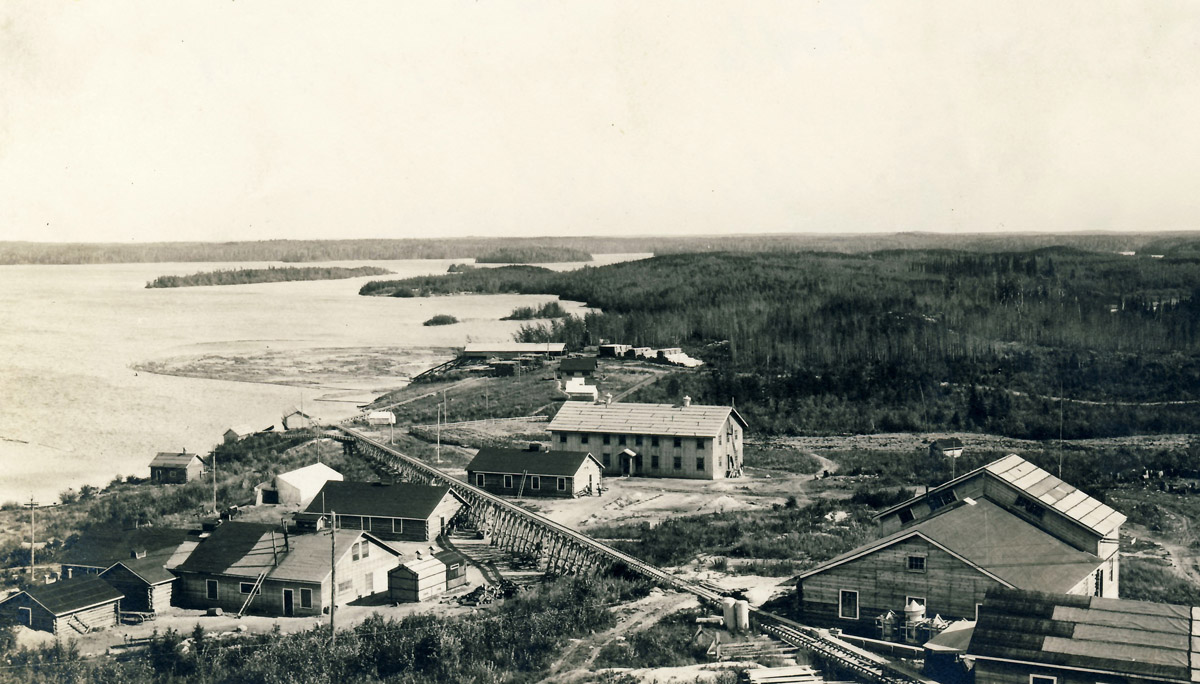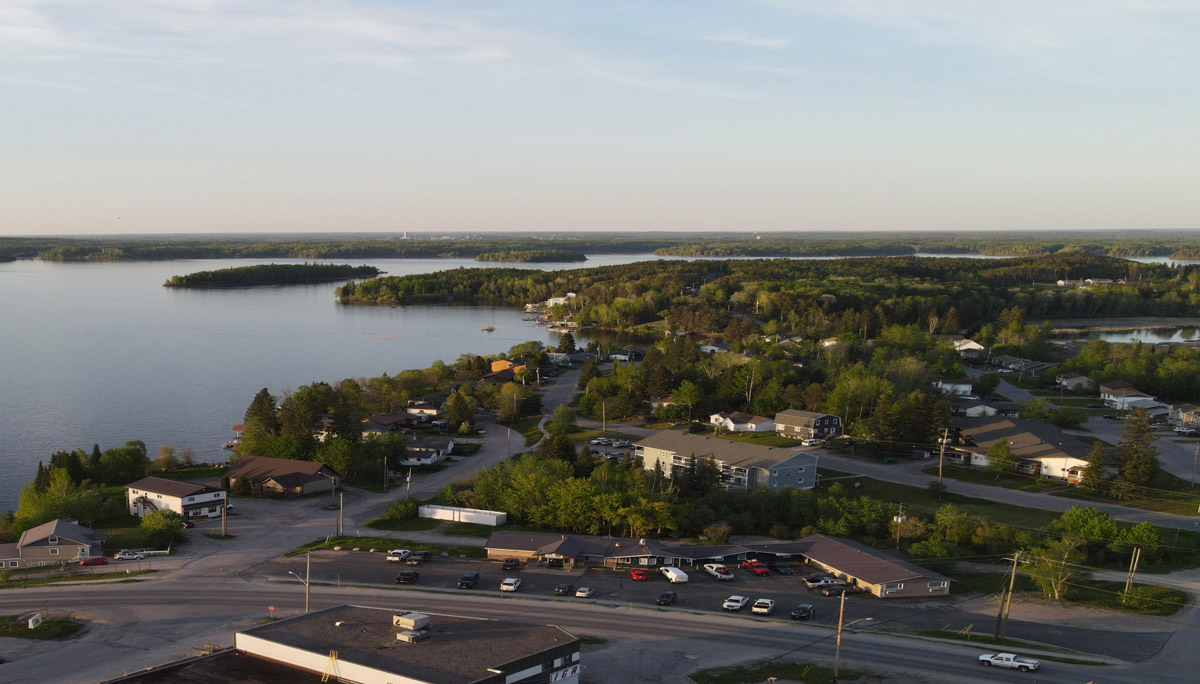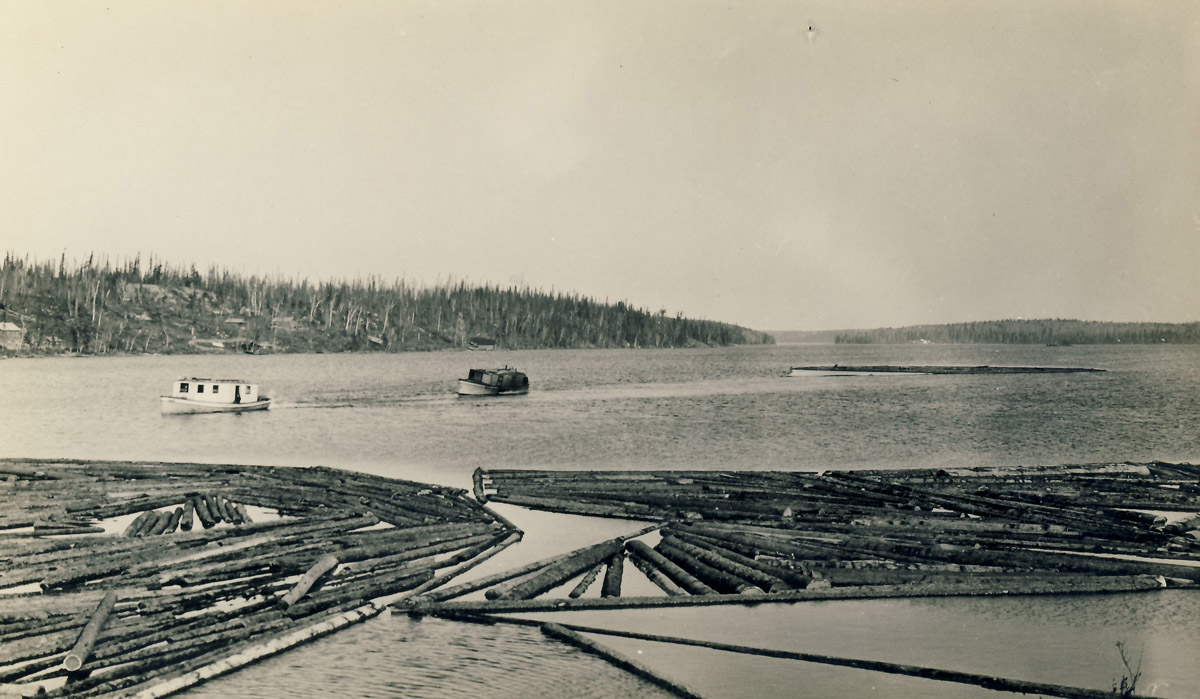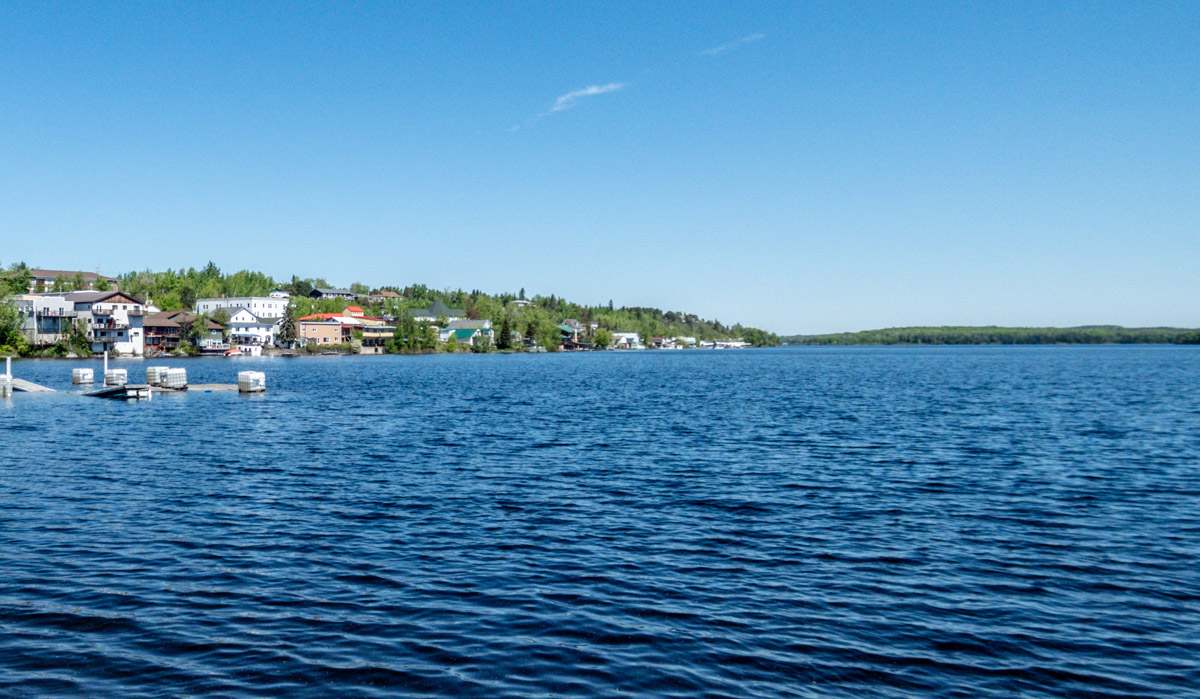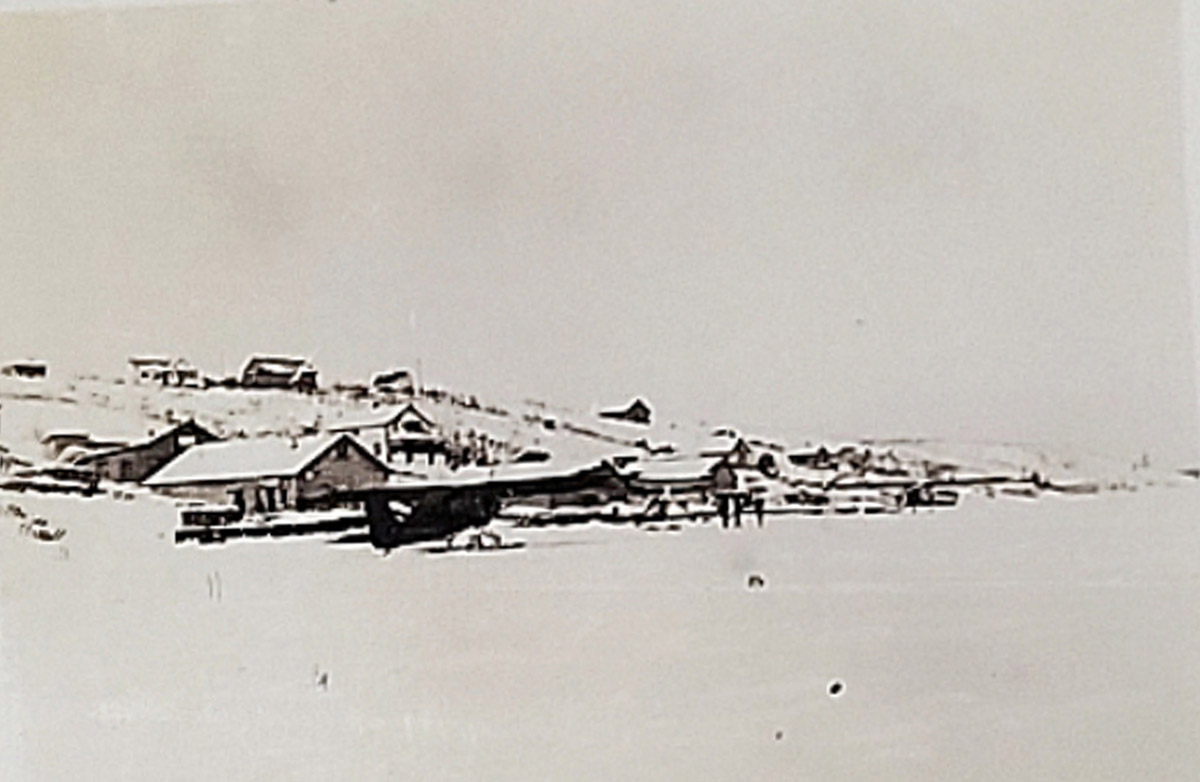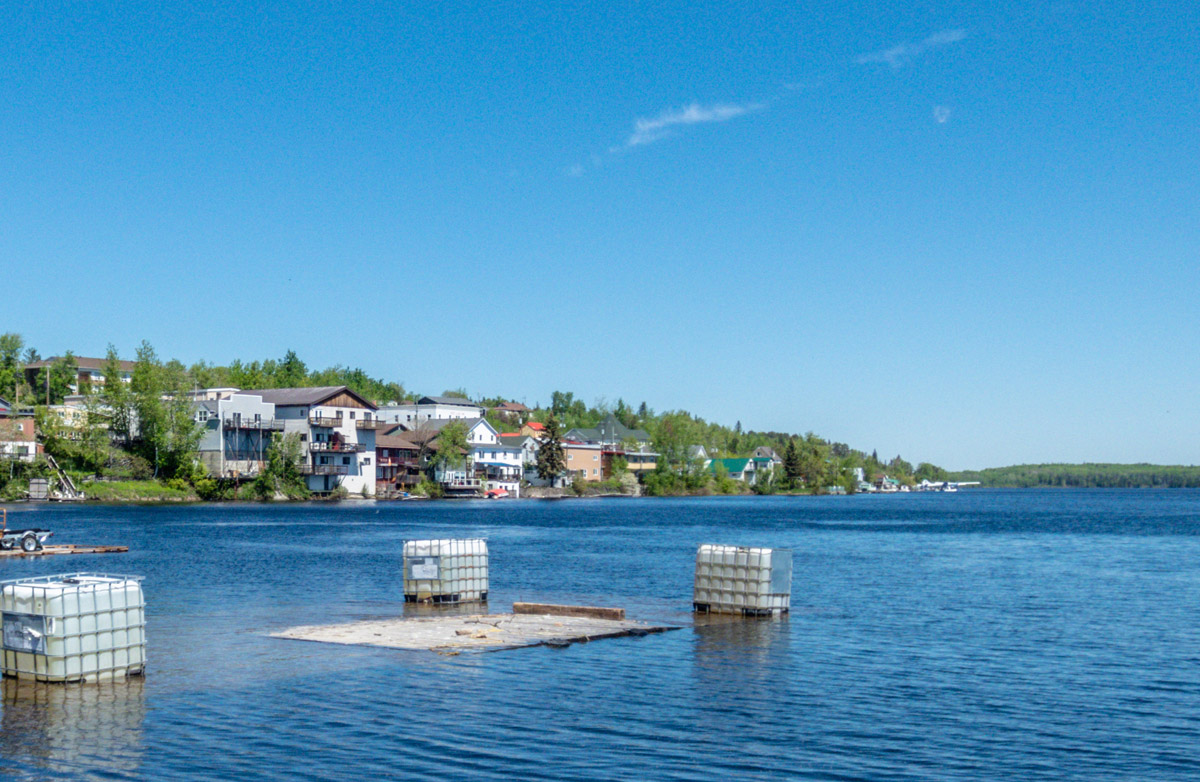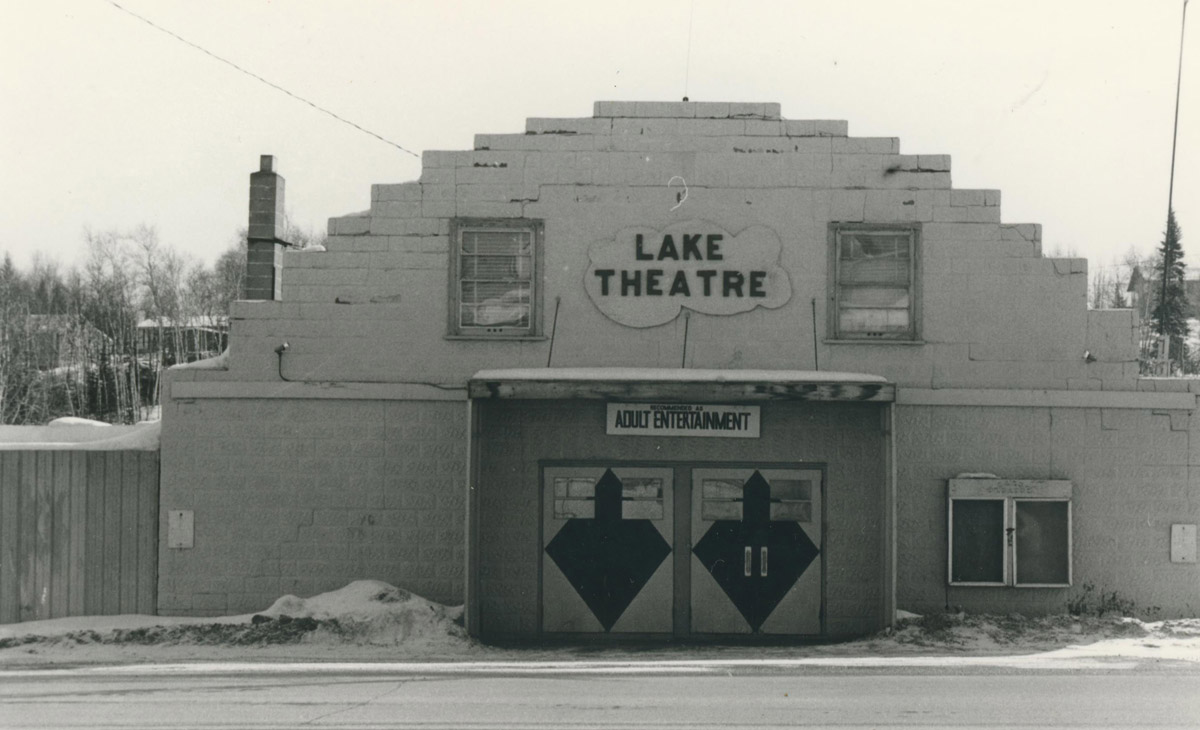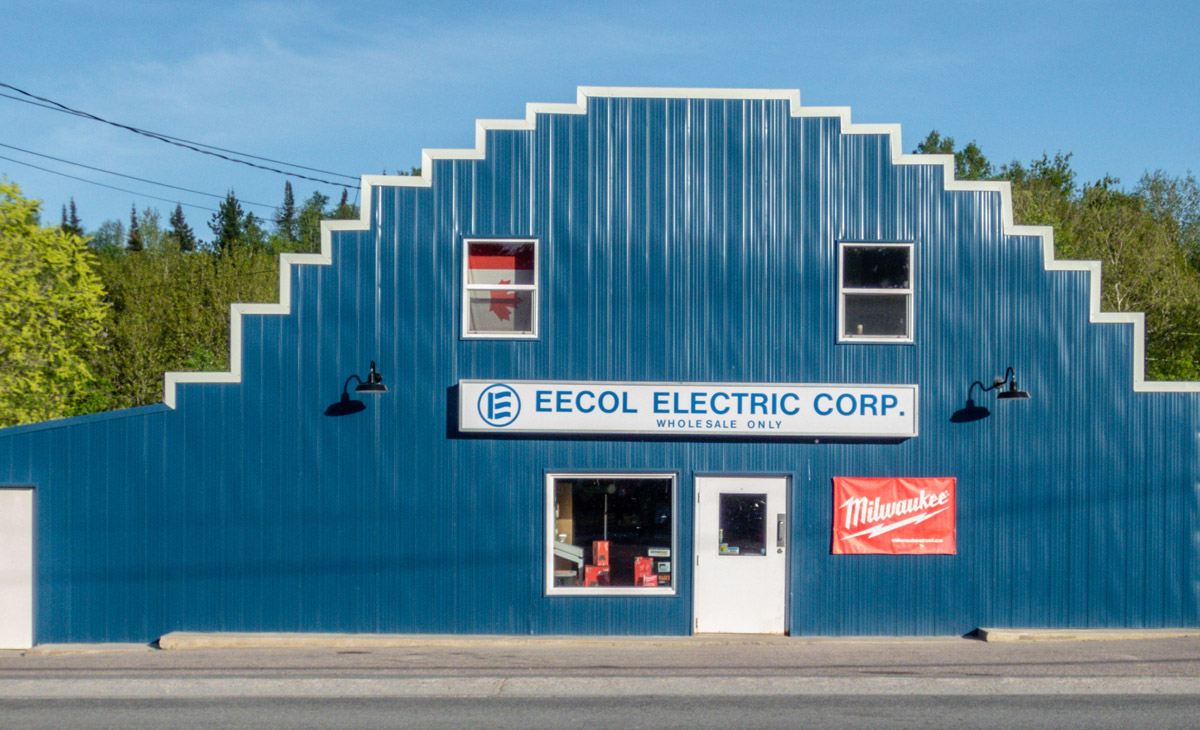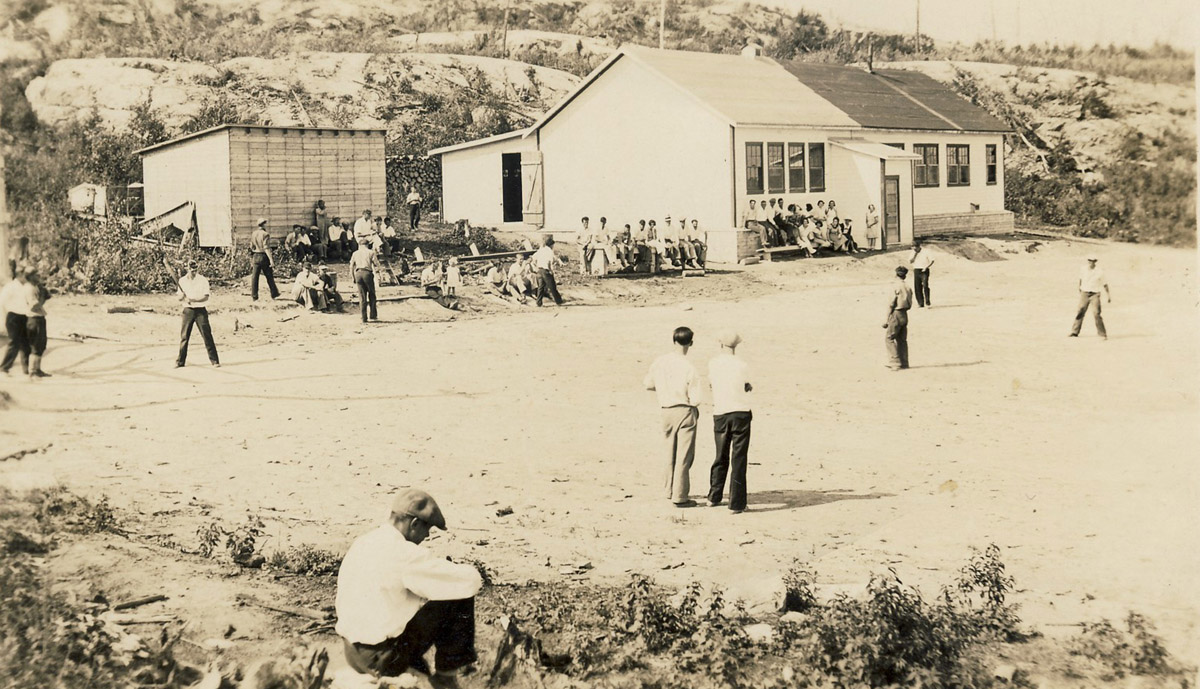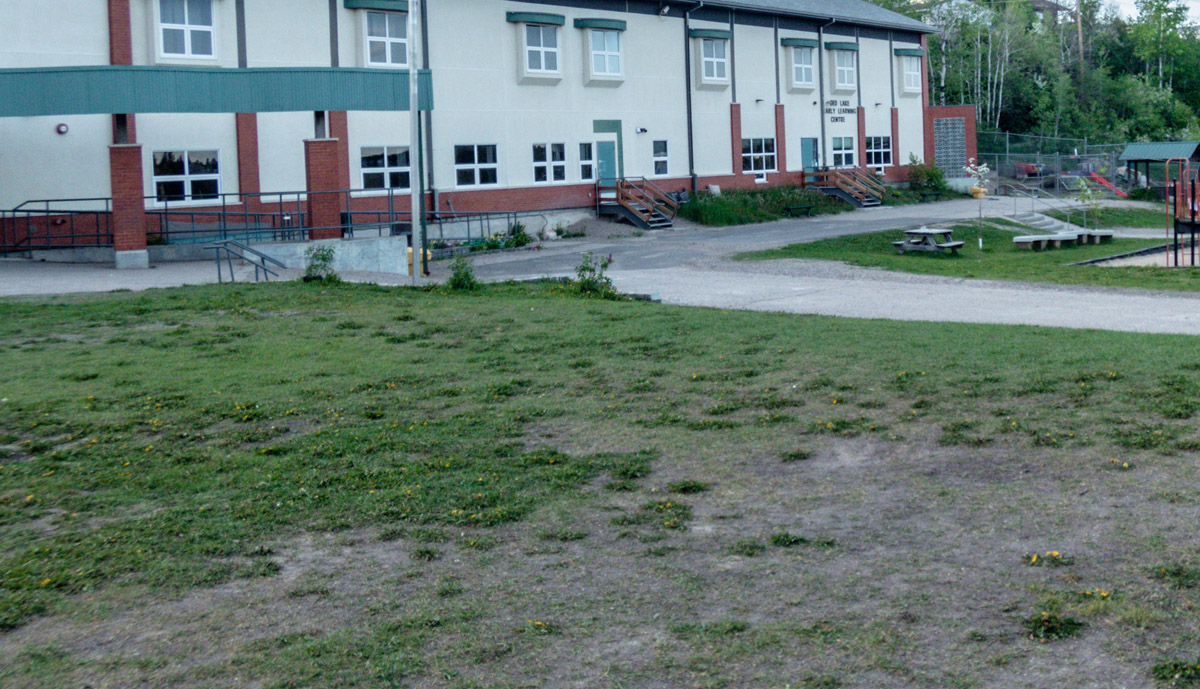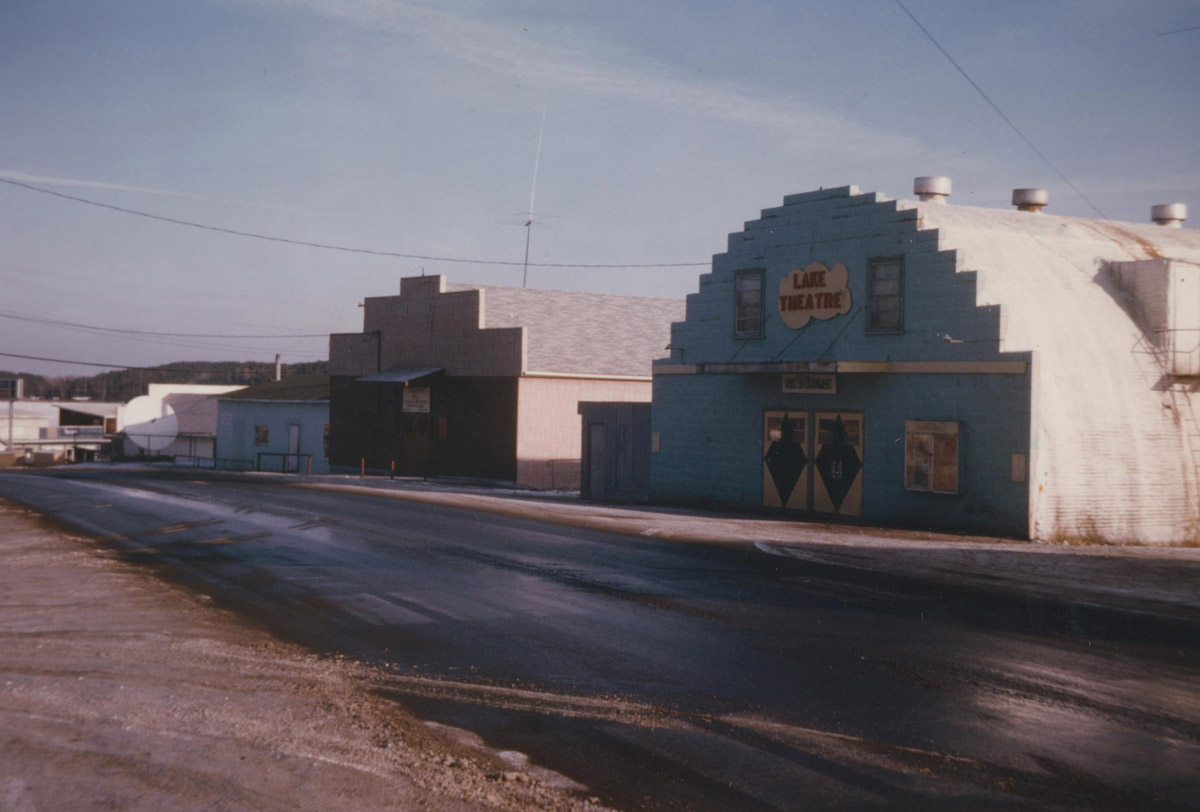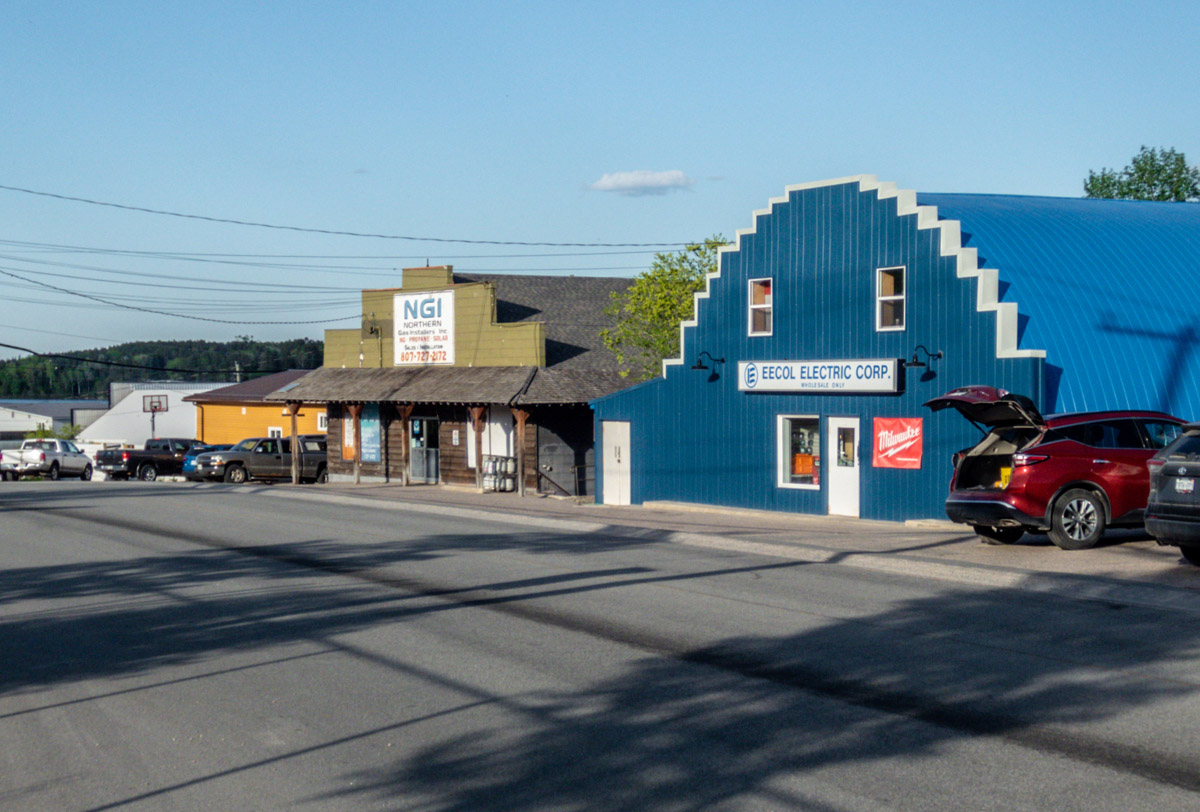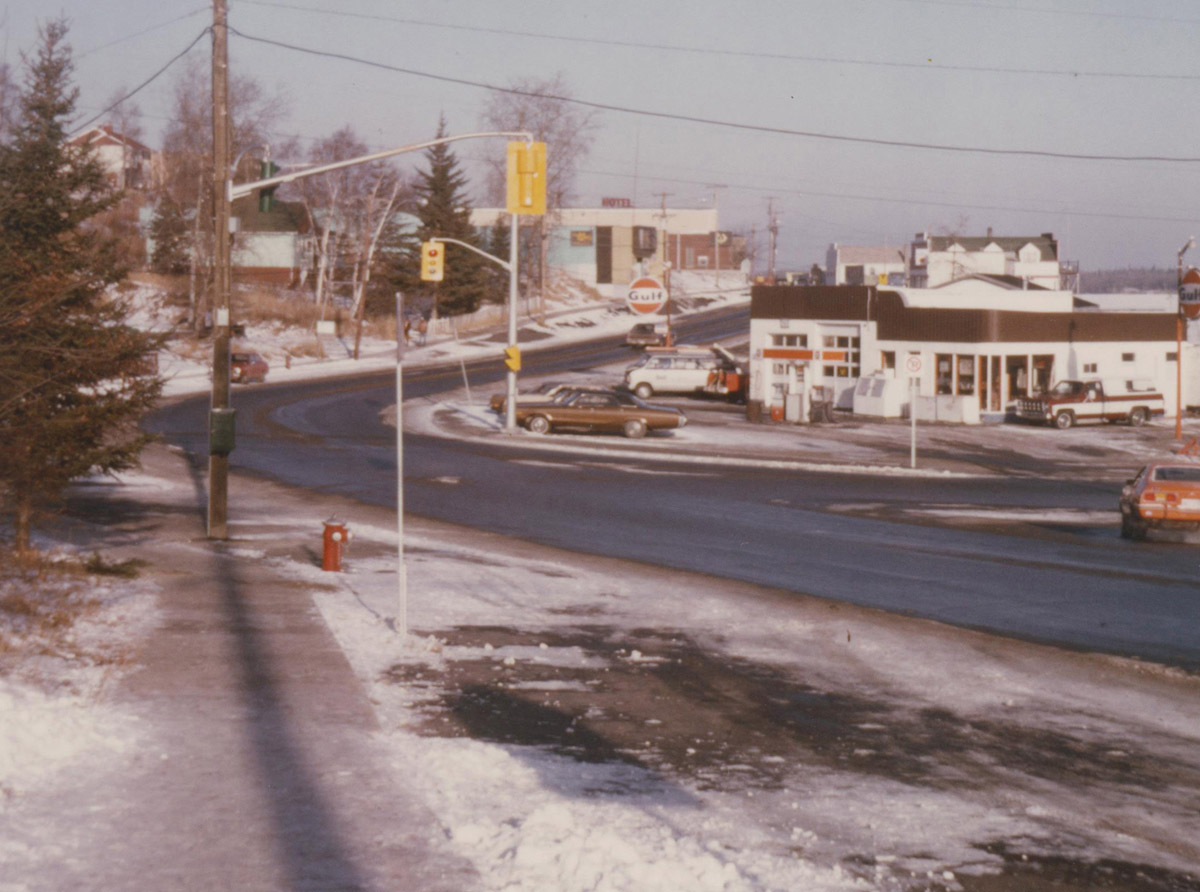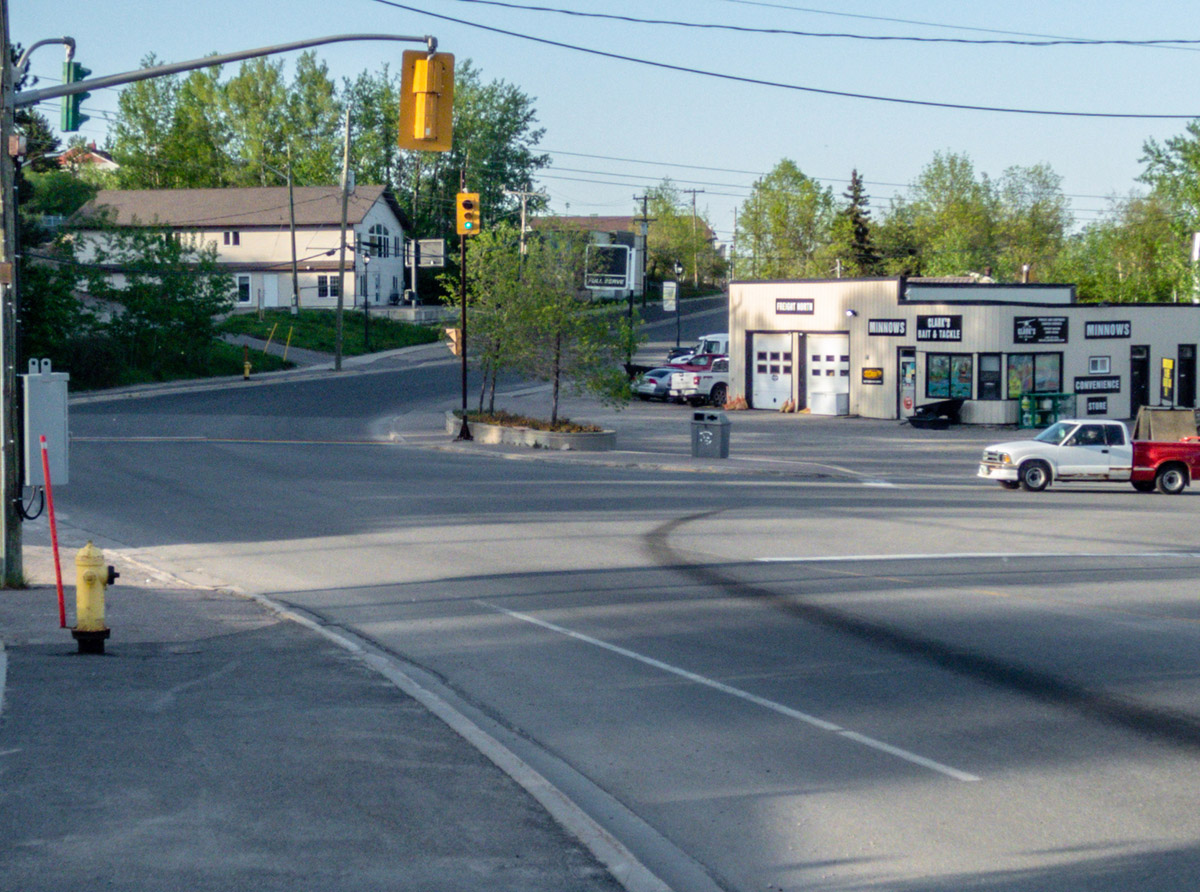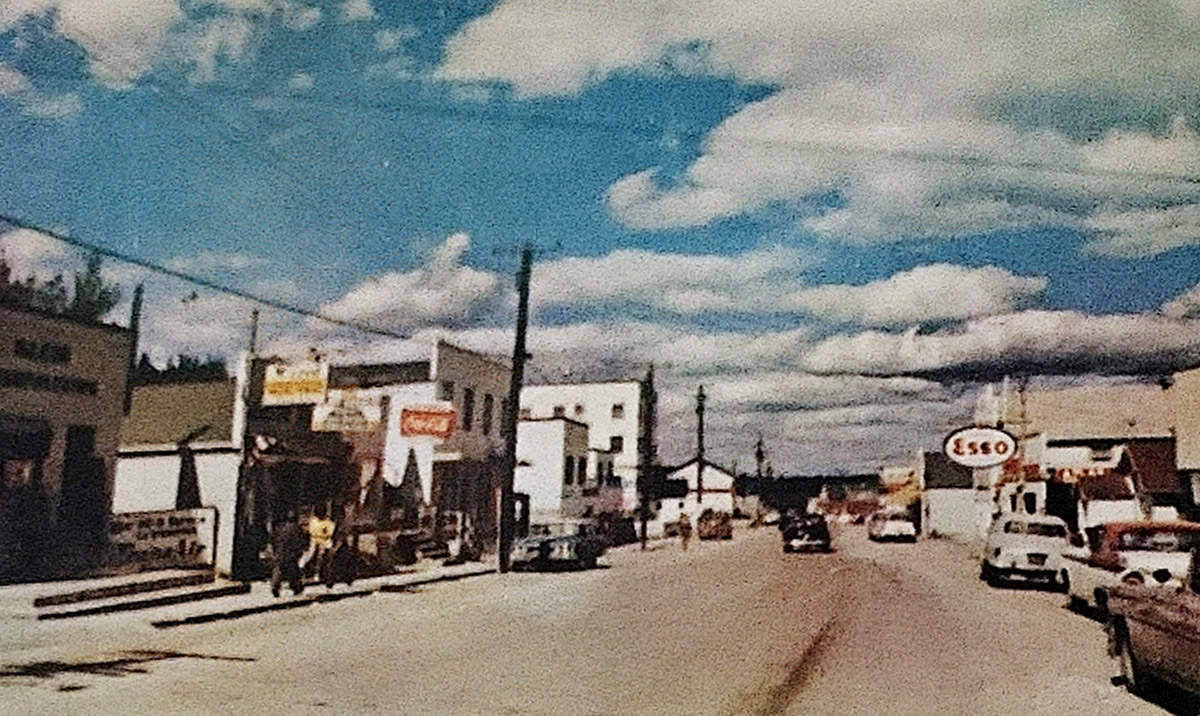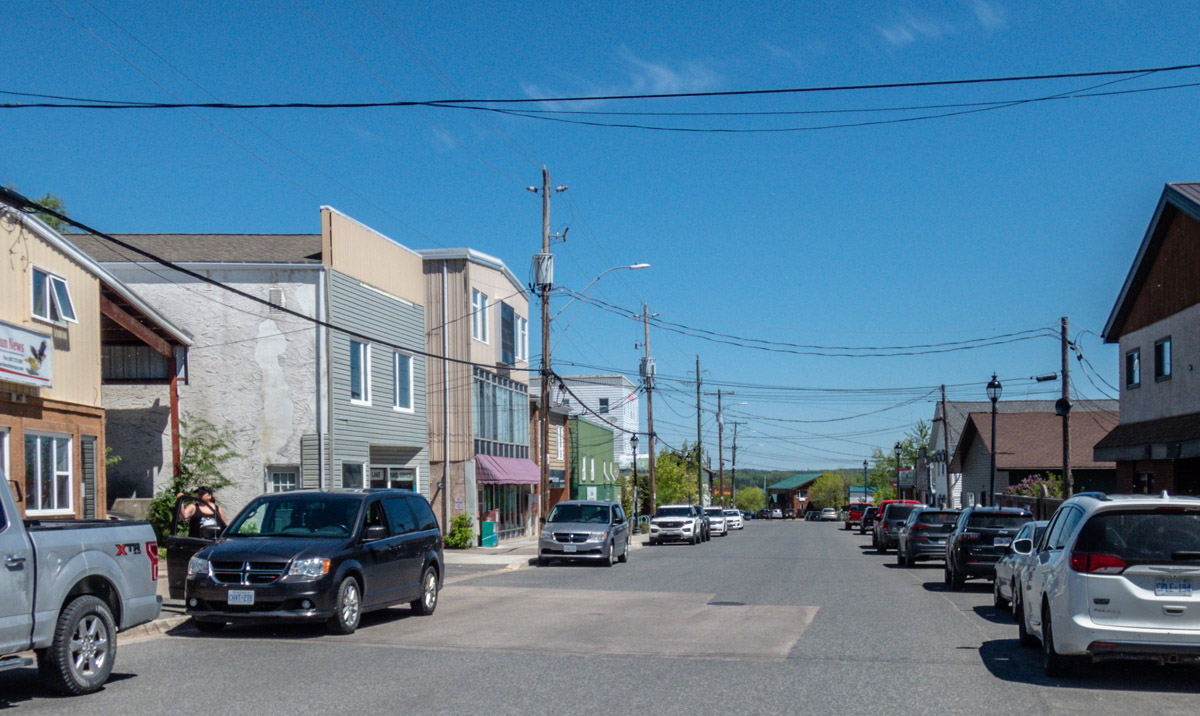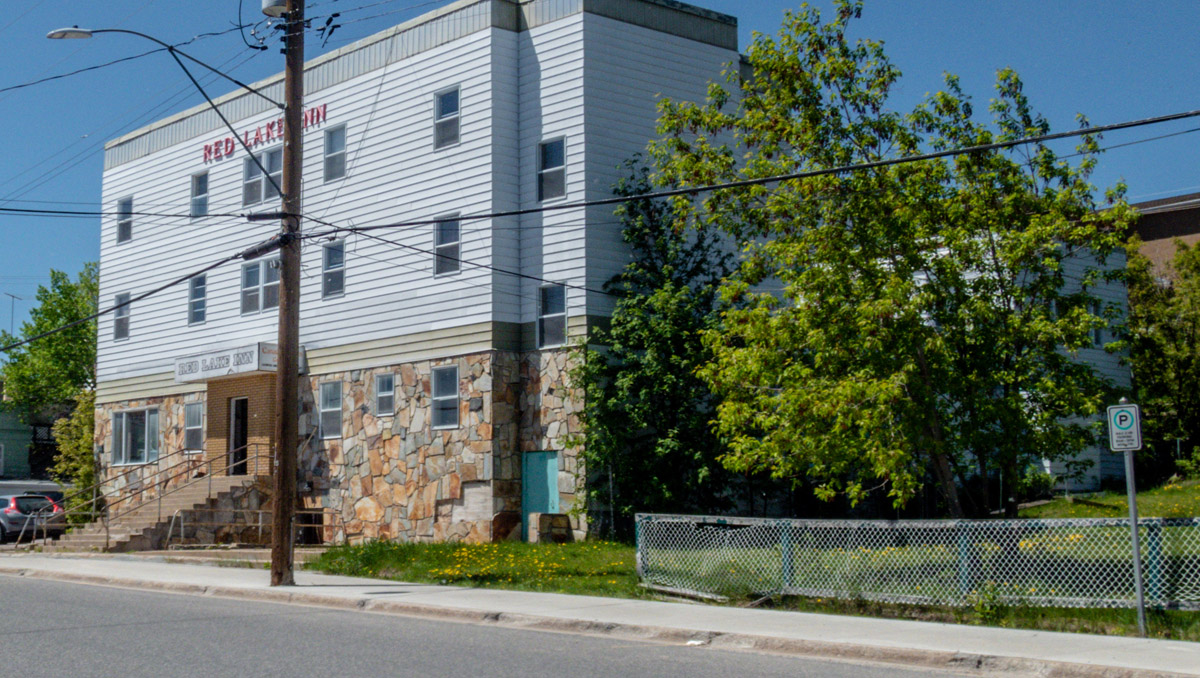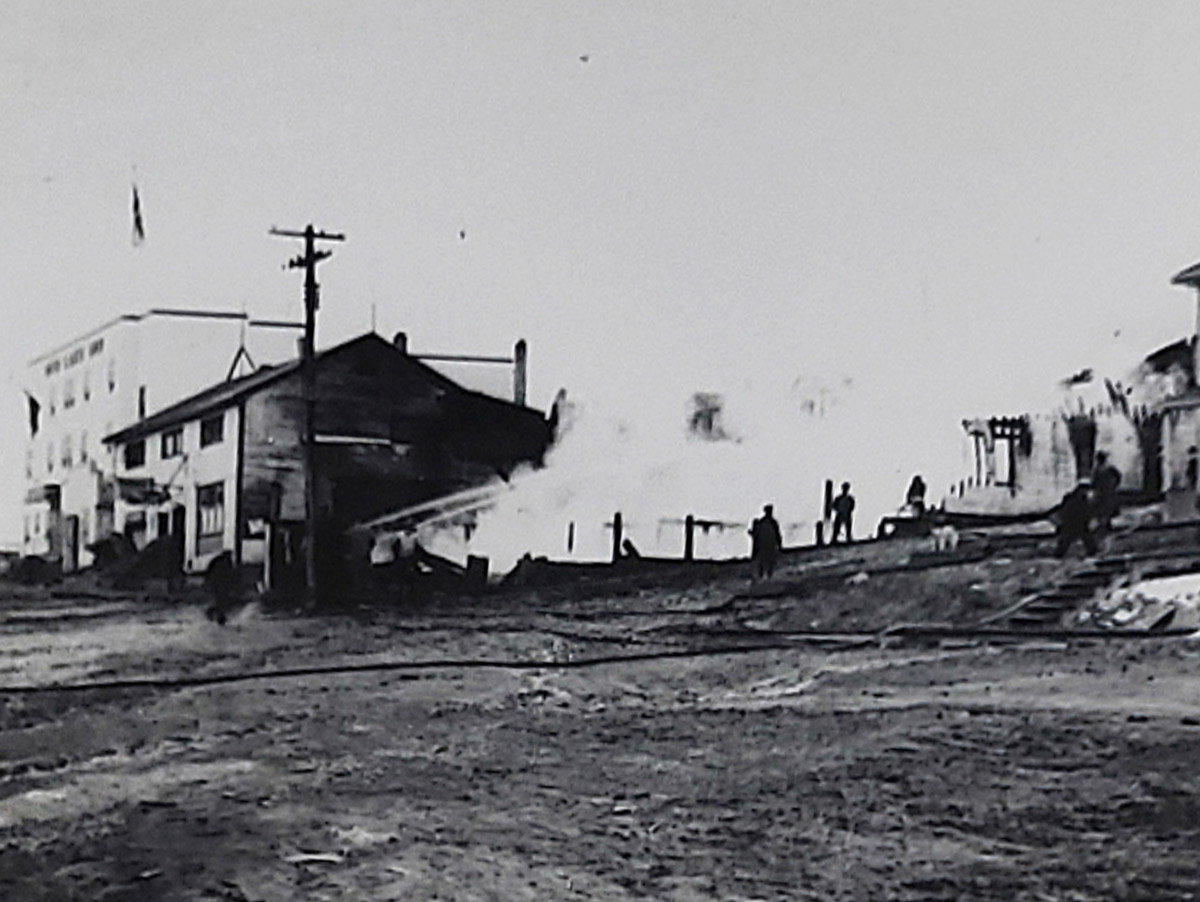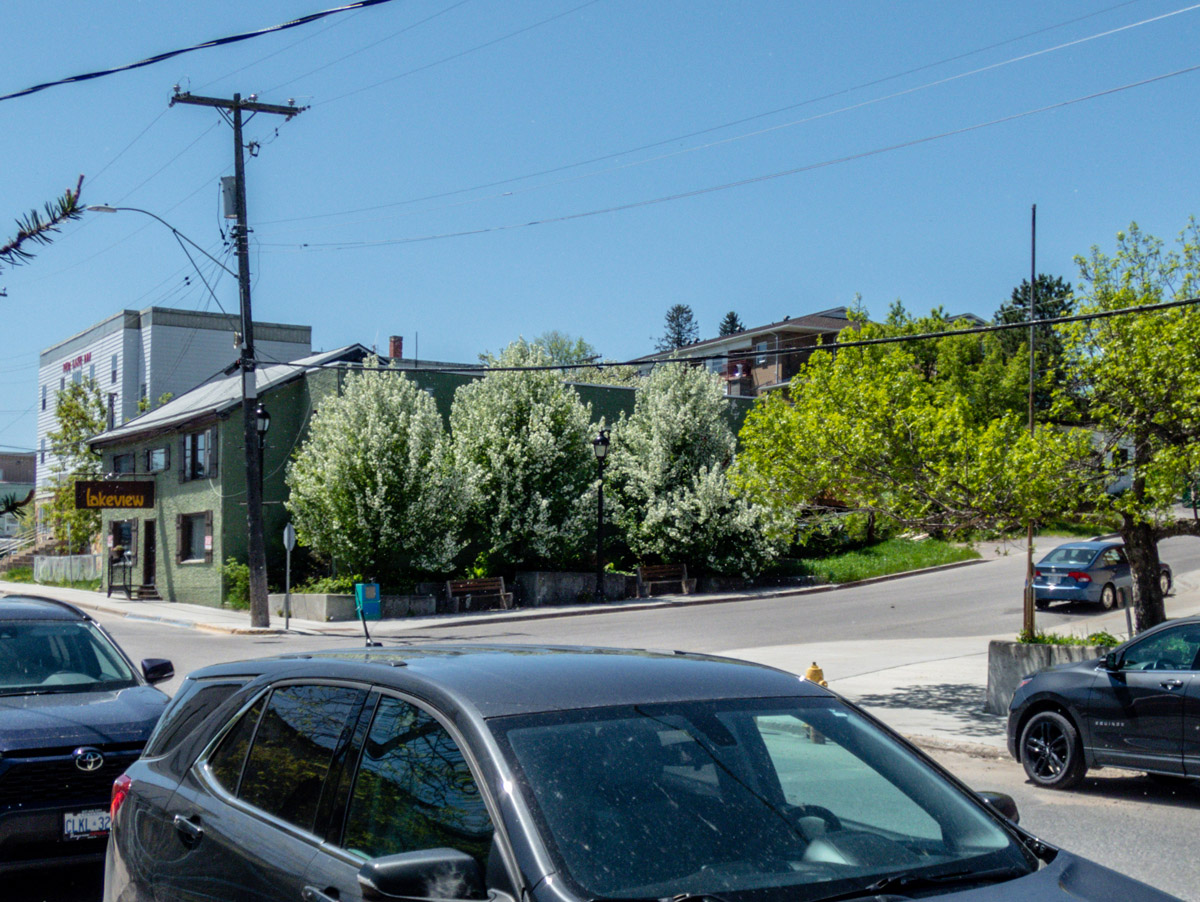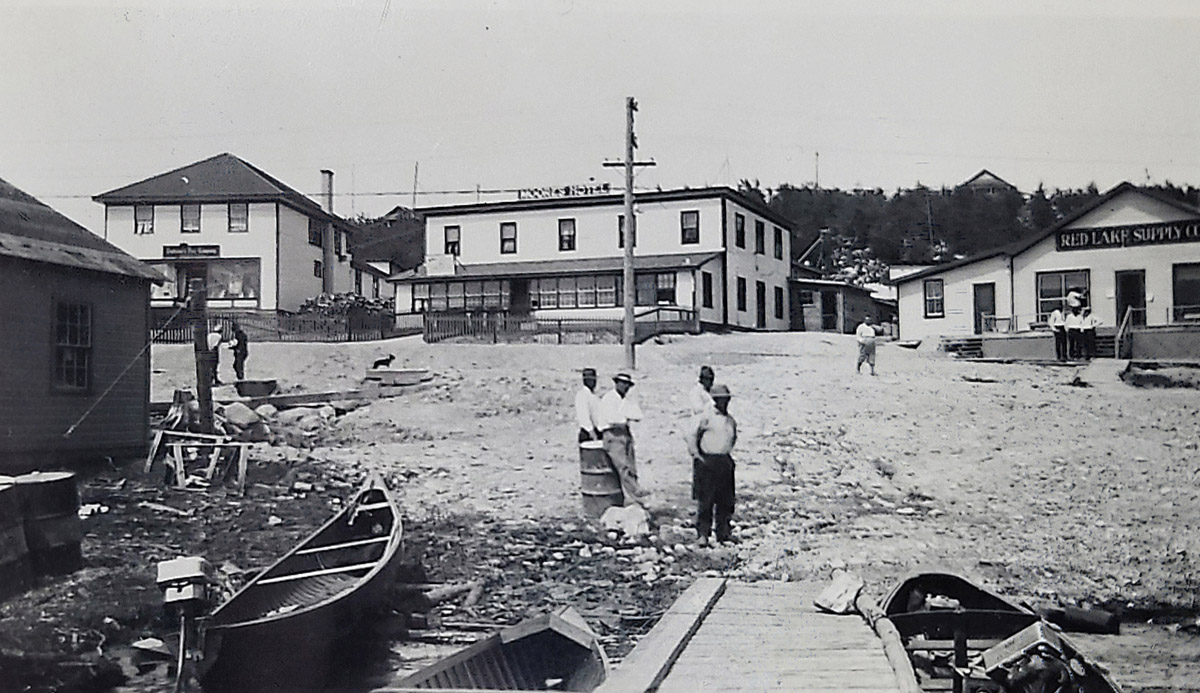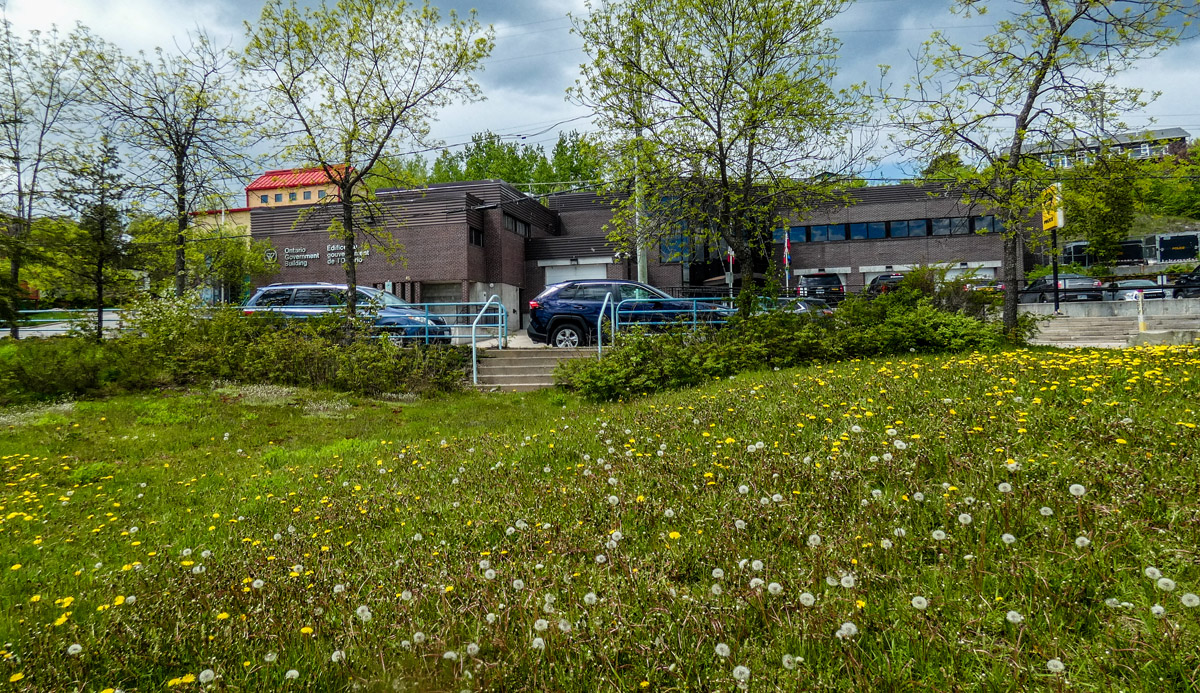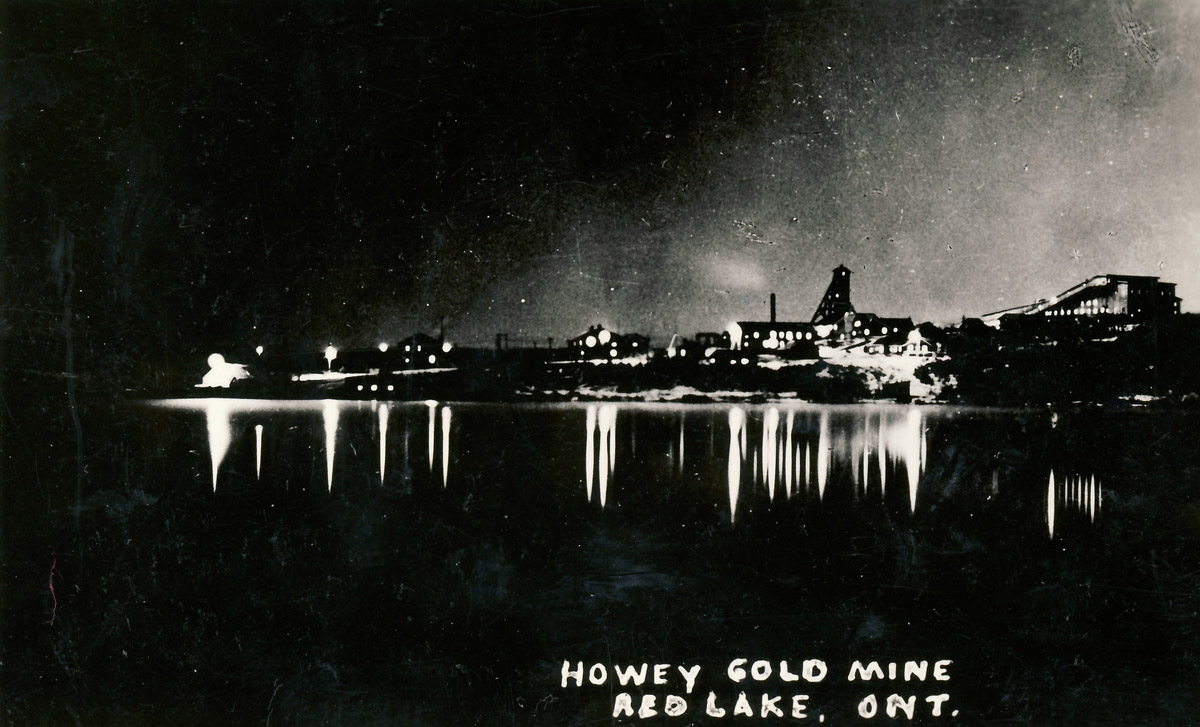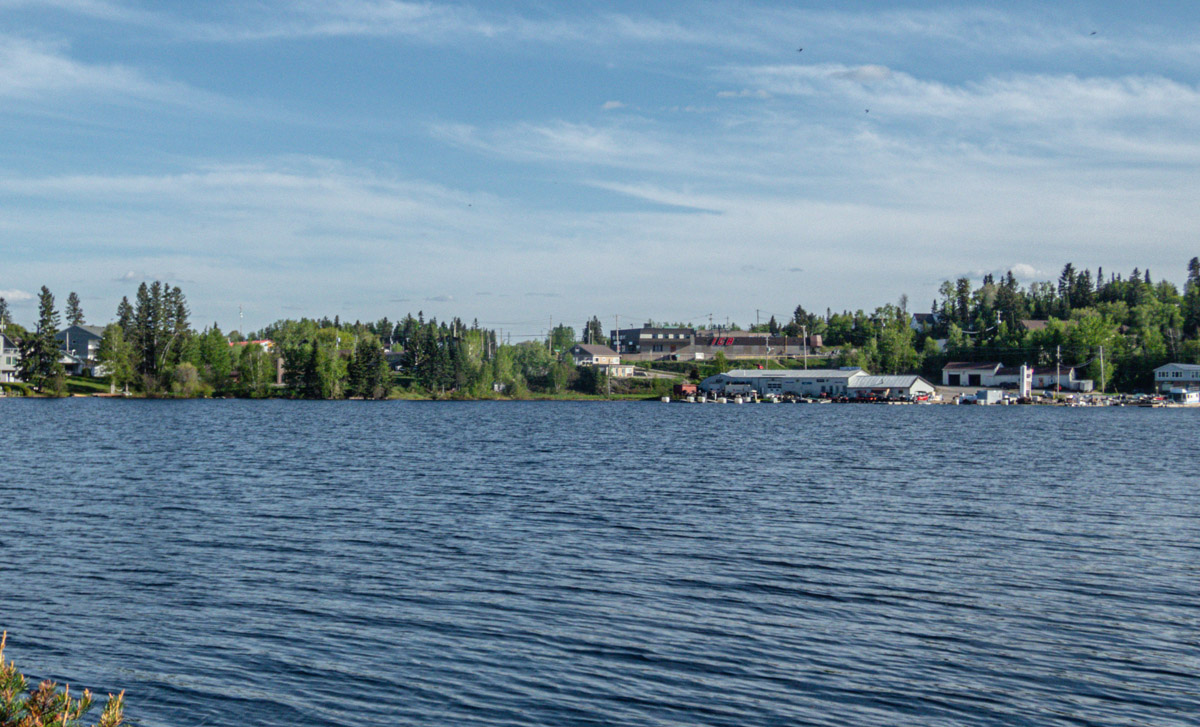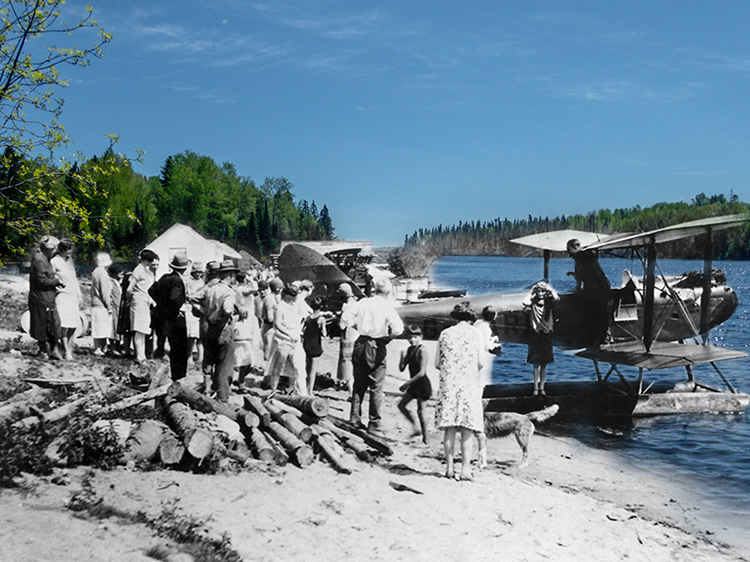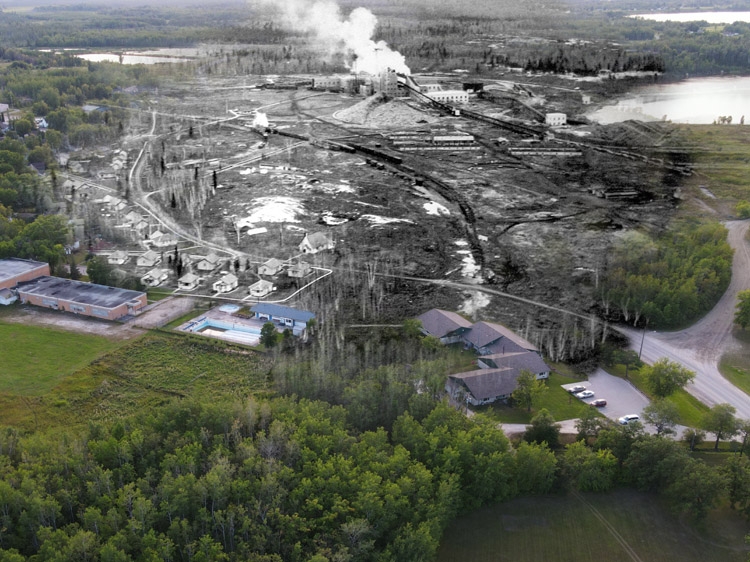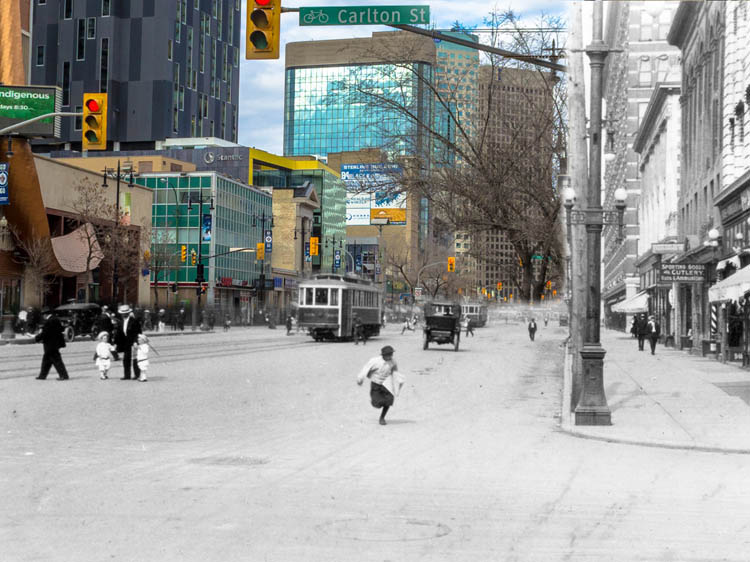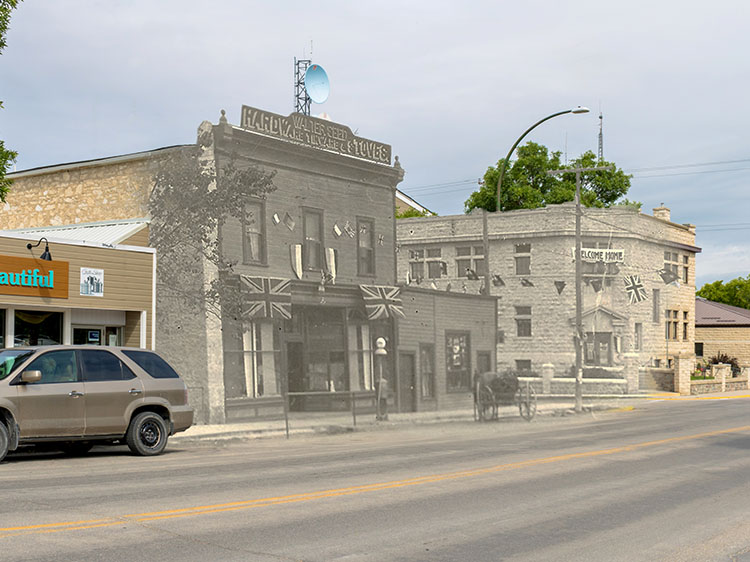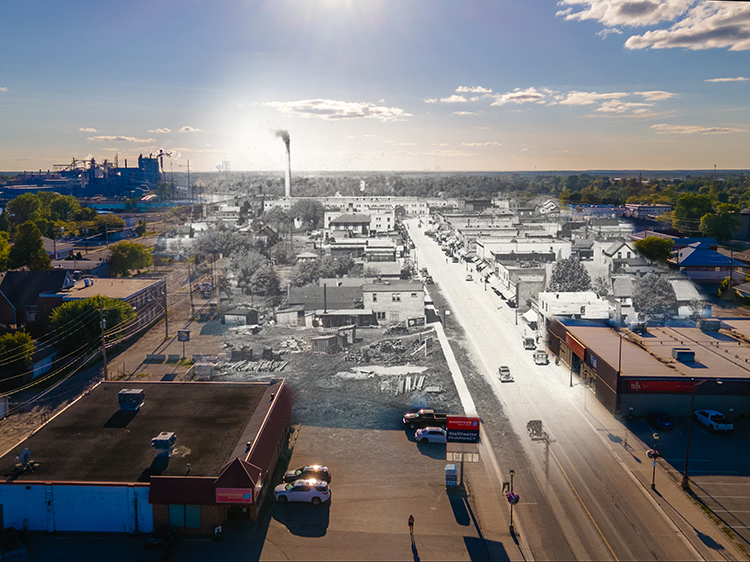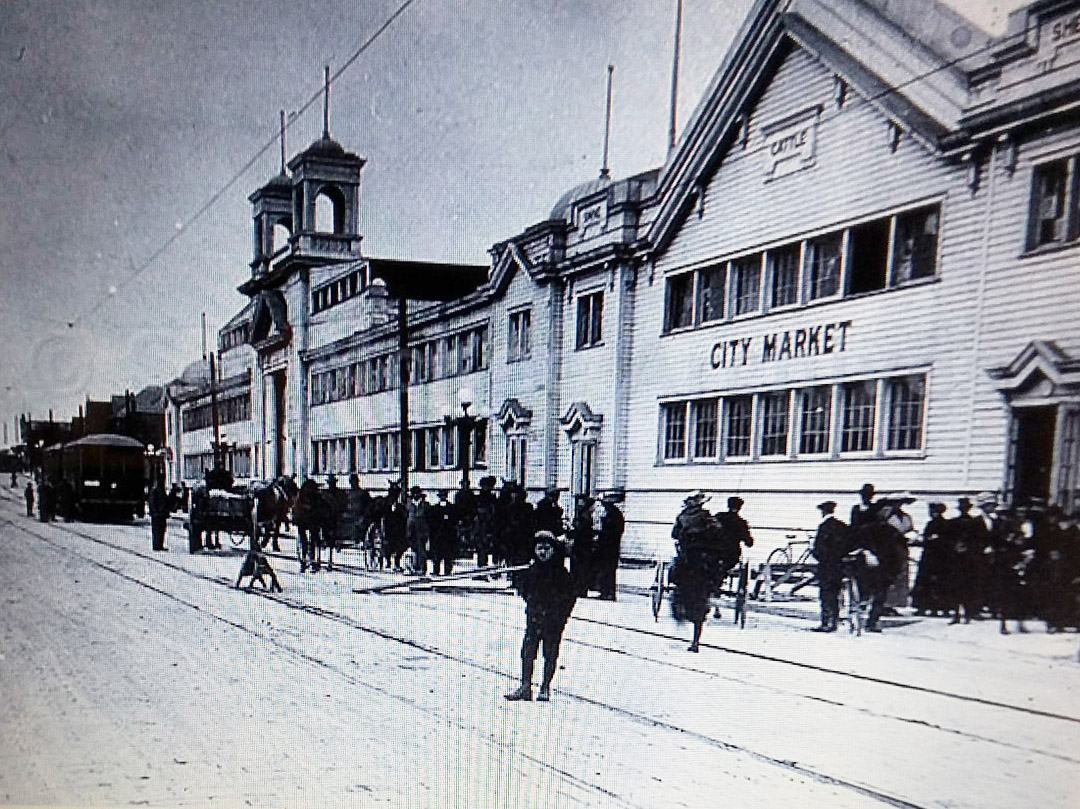Walking Tour
Life on Howey Bay
Red Lake's Story
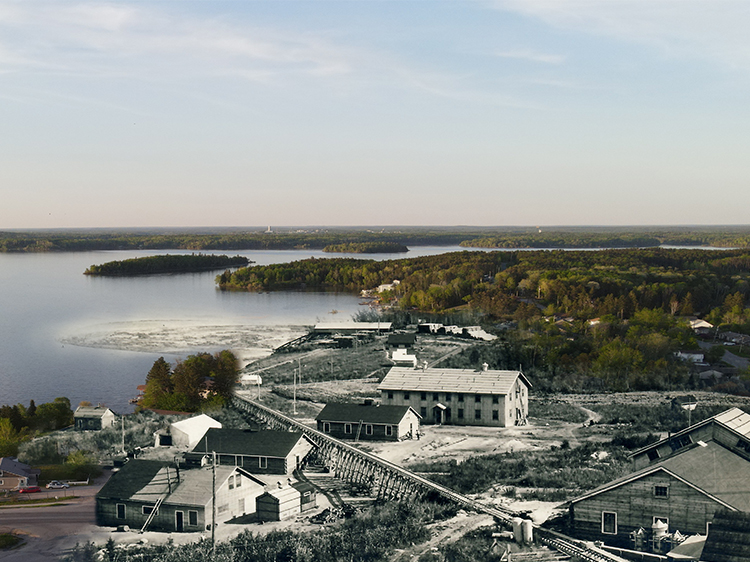
Red Lake is a place that punches above its weight. Though it may seem unassuming, this northern Ontario town was once the busiest air destination in the world. It was gold that brought airplanes and their passengers to this isolated region, and the mines that once made this place a boomtown are still operating today.While roads now connect Red Lake to the rest of Canada, travelling by air is still the most direct method of travel, and Red Lake still holds the title of “Norseman capital of the world.".
Route
This walking tour starts at the Red Lake Regional Heritage Centre on Highway 105 on the way into town. We will then proceed down the highway, past the former site of the Howey Bay mine, and to the head of Howey Bay. At Howey Street we will turn left for a brief detour to learn about the history of schooling, entertainment, and immigrant communities in Red Lake. Then we will turn back north along Howey Street and into the heart of the early settlement. The tour will conclude at the Government Docks. The tour is 2 km long.
This project was made possible thanks to the generous support of Highway 105 Tourism and the Red Lake Heritage Centre. Major funding was provided by Evolution Mining. Contributions were also made by Destination Northern Ontario. Destination Northern Ontario is one of 13 not-for-profit regional tourism organizations funded by the Ontario Ministry of Heritage, Sport, Tourism and Culture Industries. We are the largest tourism region in geography, the second largest in expenditure, and the only region that includes sub-regions. Destination Northern Ontario coordinates, aligns and invests in sub-regional programs and leads in identified pan-northern management functions, co-ordination of marketing, product development, workforce and industry training, and investment attraction with the ultimate goal to significantly increase tourism revenues in Northern Ontario. Increased visitation and yield are achieved by delivering programs designed to enhance existing tourism products and developing new tourism opportunities for the North.
1. The Red Lake Heritage Centre
Our tour begins at the Red Lake Regional Heritage Centre, which was founded in 2005. Its exhibits showcase the history of the Lac Seul and Wabauskang First Nations, gold mining, bush planes, and shares the stories of the many fascinating people who have made Red Lake what it is today.
In 2019 the Centre was heavily damaged by hurricane force winds that tore the roof off the building and damaged some of the collections. However, a rapid community response saved much of the collections and artifacts. The museum has since been repaired and renovated, opening again for visitors in 2022.
* * *
Searching for valuable furs, French speaking explorers, known as Coureur des bois, were likely the first Europeans to reach Red Lake, though no records exist that document their presence in the area. In 1654, Medard Chouart Groseilliers became the first known French explorer to record his journey in the Upper Great Lakes area, noting the quality of furs in the area. By the 1670s, the French had laid claim, though hardly enforceable, to much of the area to the east of Winnipeg.2
After France’s defeat and capitulation from North America in 1763, the English gained de jure control of the region. British explorers and settlers soon followed in the footsteps of the French, and in 1784, the first trading post was established by George Sutherland. By 1790, the Hudson's Bay Company opened its own trading post in the region.3 By 1805, the fur trade in the area had reached its peak, with a total of 175 traders working for three different companies operating in the area.4
Relations between Indigenous Peoples and traders were tense, and one Red Lake trading post manager, Donald McKay, was so despised by the local community that they called him “the savage”. They eventually rebelled against him, killing his wife, scaling his son and burning down his trading post.5 The state and the trading companies that established posts in the region never exercised any real power.
2. Gold Deposits
This fascinating photo was taken right across the street from where you're standing. The photographer was able to capture this elevated view by standing at the top of one of the Howey Gold Mine's headframes. The view looks towards Howey Bay and shows the scale of the mine operations in Red Lake.
When the Howey Gold Mine was built here in 1929 it was at the centre of one of the world's last (and lesser known) gold rushes. As early as 1883 Canadian surveyors had identified the region as potentially rich in gold, but its extreme remoteness prevented exploitation of these resources for decades.
* * *
When you imagine mining for gold, you may picture a heavily-bearded prospector sifting a riverbed for elusive nuggets of gold. At Red Lake, it was not so simple. The gold was not readily available in convenient nugget form, but was embedded in the “veins” of rocks, and could only be extracted by a complex mining and chemical process which required advanced machinery - these mines are known as “lode gold mines”. This meant that although Howey had indeed found gold, his discovery could not be easily exploited due to the isolation of the deposit.
At the time, there was a total of 289 kilometres between Red Lake and the nearest railhead. Even if the specialised machinery necessary to mine had found its way to the nearest stop, it would still have to be taken overland through a nearly impenetrable labyrinth of lakes, thick boreal forests, and tracts of swampy muskeg. Howey needed was for someone to invest in his mine, and someone who would be willing to use new technology to transport that machinery. Howey took his discovery to Toronto, where a whole financial network based around mining enterprises had taken root..1
3. Founding of Red Lake
Red Lake Regional Heritage Centre
Ca. 1920s
This 1920s photo shows an early view of Howey Bay. In the background you can see that the work of clearing the land for the Red Lake townsite is just beginning. In the days before chainsaws and other mechanised logging equipment were readily available, the work of clearing acres of forest for a townsite had to be done entirely with manual labour.
* * *
The Canadian Mining Journal described an early Red Lake gold rush scene in Hudson as a chaotic jumble of “canoes piled up in front of the Hudson's Bay Company post like cord wood”, while “power boats and scows [were] over-hauled on the shore…out on the ice, like a huge grasshopper, is the plane being petted by its pilot into performing a daily flight to and from Red Lake. Watching all these activities with the keenest personal interest is the best conglomeration of sleigh dogs the writer has seen.”1
Red Lake’s existence as a tent city would eventually change however. One of the first recorded instances of a miner building a log cabin - showing his intent to settle for at least a semi-permanent basis - was when Neh Faulkenham transported 2,000 feet of quality lumber from Hudson. To build his cabin, the lumber travelled 289 kilometres by boat, which included five portages. Slowly but surely, more log buildings would join Mr. Faulkenham’s, and Red Lake would begin to resemble a town in the early 1930s.2
As Red Lake's location was such a significant obstacle, the development of both the mining operations and community were only possible due to aircraft. If not for the involvement of investor and entrepreneur Jack Hammel, Red Lake may have never reached its full potential. Hammel, living in Toronto as a mine promoter, took Lorne Howey’s discoveries seriously and invested $50,000 towards mine exploration at Red Lake. Although Canada was on shaky financial ground during the 1920s, Hamell was committed – he was going to be the first to exploit the land in an industrial capacity.3
Hammel also helped to spread the message to prospective miners of the riches that lay in the north of Ontario. Word travelled quickly of Jack Hammel’s venture, and by 1926 there were already 3,500 claims had been acquired by independent prospectors at Red Lake. But Hammel’s operation, which went under the name of Howey Gold Mine, was the most successful.
4. Development by Air
Ca. 1930s
This photo looks across the frozen lake towards the small townsite. Today, the average low temperature in Red Lake in the depths of winter is around 22℃. Waterways freeze to depths that comfortably support large vehicles, such as the plane in the photo, which is parked on the lake's frozen surface.
* * *
But the plane changed all that. After decommissioning following the end of the Great War, Canadian pilots and engineers brought their expertise, and sometimes lust for adventure across the Canadian landscape. In 1924, the famed pilot Joseph Pierre Romeo Vachon landed his plane in Red Lake. Among those who took notice was Jack Hammel.1
Using aircraft to reach Red Lake allowed Hammel's mining operation to flourish. No one had ever used aircraft for mining purposes before. When Hammel chartered seven forestry aircraft to move men and supplies into the lake, he opened up a whole new avenue of possibility for the mining industry.
Commercial flights soon followed Jack Hammel’s chartered flights. In March of 1926, the first such flight landed on the lake, to the astonishment of local prospectors. The 90-mile trip from the airstrip in Hudson cut off days, and sometimes weeks from the overland trip. Airmail soon followed the commercial flights, helping to connect Red Lake to the rest of the world and making the community a more livable place for its inhabitants.
The most famous of these planes was the Norseman, which took flight in 1935. These planes had an unrivalled ability to land in watery environments, which made them perfect for use in northern Ontario. Today, Red Lake is known as the Norseman capital of the world.2
Hard as it may be to believe today, Red Lake was counted as the busiest airport in the world in the mid 1930s. This complex operation was made possible with Hammel’s creation of Northern Aerial Minerals Exploration (NAME), which operated a fleet of 10 aircraft across 34 airstrips. The parent companies that grew from NAME eventually coalesced to become today’s Air Canada.3
5. Boomtown Lifestyles
The Lake Theatre displays a sign reading "Recommended as ADULT ENTERTAINMENT", catering to the male clientele. Such performances would have been popular events for the men of Red Lake after long days in the mines.
* * *
Boomtowns could be rough places. Hard attitudes were prevalent, and alcoholism rife among the often lonely and desperate men who came to remote and isolated communities. The attitude and lifestyle of Jack Hammel, provides an extreme example of the attitudes of some of the men who lived in frontier communities. One townsperson recalled Hammel as an unpleasant and tyrannical individual, "I never met the man (thank God) but did sense the fear and apprehension with which he was perceived around the mines. The executives trembled at the mere thought of who might be fired at whim during one of Hammell's visits. He ruled Red Lake with an iron hand. The townspeople seemed to tolerate his unpredictable behaviour and outbursts of foul language” Perhaps not surprisingly, he was infamous for his love of drink as well.1
For such men, “Adult Entertainment” would be exactly what they were looking for after such a hard day in the mines - or overseeing them.
6. Children, Families, and Education
In this photo, students play a game of baseball in the yard outside of the community's small school. As more families moved into Red Lake, the need for school facilities became essential for the burgeoning town. The first school was opened in 1929 in a small log cabin with only 11 students. The school in this photo was opened two years later, though the building has been rebuilt in the same location on several different occasions.
* * *
Canada’s first female geologist, Diana Loranger, was also the first woman to earn a PhD from Red Lake. She used the education she obtained here to make important discoveries in the field of Paleoecology. Her schooling began at Red Lake in the 1930s, when Red Lake was still a man’s world and a boomtown. Growing up in an environment so richly endowed with natural wonder played a key role in shaping her interest in the natural sciences and geology.1
While Red Lake could be described as an uneventful place to grow up, occasions for celebration did spring up from time to time. In 1939, King George VI and Queen Elizabeth paid a visit to nearby Sioux Lookout, and the students of Red Lake took an entire week off classes to go and see the royal couple.2
7. Immigrant Communities
Ca. 1970s
The Polish Hall, a community centre for Polish immigrants and their descendants, stands next to the Lake Theatre in this 1970s photo. While neither business occupies these buildings today, both structures are virtually unchanged from when this shot was taken over 50 years ago.
* * *
Many of the Polish, Ukrainian, and Ruthenian immigrants to Canada were familiar with mining techniques, having worked the mines of Silesia and the Carpathian Mountains for centuries. Red Lake became a natural destination for these immigrants. Though many could not speak English, this did not prevent them from finding work in the mines. Other Eastern European immigrants brought specialised skills with them, and opened up shops such as photography studies, tailors, and restaurants. One of the first Red Lake photographers, Liudvik "Louis" Balciunas, was a Lithuanian immigrant, and many of the earliest Red Lake portraits were taken by him.2
These new immigrants were proud of their culture and have maintained cultural centres across Canada to promote and preserve what they left behind. These cultural centres often focused around music in particular - and helped to introduce polka to North America. Community halls also preserved folklore and language, and became a refuge of community support and solidarity when times grew tough. 3
Today, Red Lake’s population is approximately 50% first generation immigrants and their descendants.3
8. The Road Link
Ca. 1980s
The quiet scene in this photo shows the snowy intersection of Howey Street and Highway 105 in the 1980s. The traffic light that hangs above the street in this shot is actually Red Lake's only traffic light, and is widely known as the Northernmost Stoplight in Ontario.
* * *
Construction of the Kings Highway was no easy task. It was parcelled out to 8 different task groups, which then began construction on workers' camps throughout the tract. 3,500 tonnes of heavy equipment were brought in by water, and distributed throughout the camps. Given the immense difficulty of carving a road through incredibly dense stretches of forest and lakes, severe weather, and thick clouds of biting insects that workers had to contend with, the turnover was exceptionally high. One contractor estimated that only one in three of the workers who initially joined the project stuck around for the finished product.
The highway was estimated to save Red Lake mines approximately $300,000 per year on shipping costs, and critically opened Red Lake to year round shipping and commerce. It was completed in 1947, and improved upon during the subsequent decades. The rough gravel road was paved in 1963, and remains little changed from that time.1
With this highway, Red Lake lost much of the isolation which characterised northern towns, for better and for worse. While this stoplight might not be necessary anymore, it's a sign of the relatively large size of Red Lake when compared to its neighbours. The highway also spelled an end for the water transportation industry in Red Lake and the surrounding area, as travel by boat could not match the convenience of driving. The airline industry, however, suffered no such collapse. To this day, airplanes are oftentimes the preferred mode of transportation.1
9. Building Up Howey Street
Red Lake Regional Heritage Centre
Ca. 1970s
This photo, taken some time in the 1970s, looks north on Howey Street towards the Red Lake Inn, the tall, white building standing centre-left that survives to this day. Howey is Red Lake's main street, and the centre of business and activity in the community.
* * *
Local mine operators dictated which shops could or could not operate in Red Lake, and they had the power to grant monopolies where they saw fit. One tenacious businessman Kenneth McDougall, found a creative solution when his business plans were thwarted by the mine operators. McDougall came to Red Lake in 1931 to open a general goods store, only to find that Howey Mines had already given a monopoly on general goods to another entrepreneur. Unperturbed, McDougall simply opted to sell his goods from a ship for the first few years of operation, eventually moving into a log cabin he purchased from the police.1
While a beauty parlour may not be associated with a northern boomtown, Red Lake had its fair share of them to cater to its female residents. In the 1920s and 30s, when women were expected to steer clear of bars and entertainment halls, beauty parlours stood in as social gathering places for their clientele, and often included elaborate dinners and tea ceremonies.
10. The Red Lake Inn
Red Lake Regional Heritage Centre
Ca. 1940s
A car drives by the Red Lake Inn in this 1940s photo. The Inn still operates out of the same building over 80 years later. While today the exterior of the first floor has been renovated with a stonework facade, the building remains remarkably unchanged. Throughout Red Lake's history, hotels have been critical to accommodate the seasonal or short-term workers who work in the mines.
* * *
In a town with limited architecture for social functions, these inns also served as more than simple lodging for workers. The Red Lake Inn occasionally played host to town gatherings and important community conferences on local issues. The decision to create the Kings Highway and connect Red Lake to the rest of Canada was hosted at the Red Lake Inn.1
While the seasonal mining clientele may not exist anymore, Red Lake still receives plenty of visitors. Incredibly, the Red Lake Inn has never closed its doors, and has been in continuous operation for over 80 years! It is now joined by a host of newer accommodations, such as Nature’s Inn. It now occupies four different buildings which once housed single miners working for the Dickenson Mine.2
11. Fires and Firefighting
Firefighters struggle to contain a blaze that has already mostly consumed a building. Remarkably, the Red Lake Inn, and the building next door survived and are easily recognizable today.
* * *
In 1930, the first significant fire in Red Lake’s history broke out in May, after an unseasonably hot and humid spring. The fire was spotted by a pilot, who interrupted his trip out of town to turn around and warn the community. Thanks to his quick response, Red Lake was able to spring into action. All miners left the shaft and worked tirelessly to put out the fire, utilising every water-containing vessel available to try and contain the inferno. After three days, smoke began to fill Red Lake, and Red Lake's future hung in the balance. But on the fourth day, the town was saved by the timely arrival of rain.
In 1981, the town was nearly destroyed by the largest fire in its recorded history. Despite the use of more modern forest fire fighting techniques, including helicopters, the blaze would not relent. The municipality decided to evacuate the town, though some refused to leave their homes. Fortunately, Red Lake was again spared destruction when a steady rain extinguished the fire.2
To this day, fires continue to threaten Red Lake and other northern Ontario communities. In 2021, Red Lake was nearly evacuated when over 100 fires, including three major fires, broke out in the area. This fire had a particularly high impact on the Poplar Hill First Nation and Pikangikum First Nation, who had to be evacuated to host communities until the danger passed.3
12. Mcquaig's & Red Lake Supply
Ca. 1940s
This photo was taken from a dock at Red Lake's main landing, and looks towards buildings above the shoreline. In the back you can see the Hudson's Bay Company store (left), McQuaig's Hotel (centre), and the Red Lake Supply Co. (right). The community's gender imbalance is strongly reflected in this 1940s photo as all of the figures in the shot are men.
* * *
Solomon’s operation employed men of French, British, Iroquois, and mixed heritage, and by the time of his death in 1805, employed 175 traders in northwest Ontario. The Hudson's Bay Company faced stiff competition at the time, but it stood the test of time in a way no other fur trading company did. It managed to outlast Solomon and established dominance in the region's fur trade as the 19th century unfolded.1
The HBC moved its operations in and out of Red Lake on several different occasions, and in 1933 established a store in Red Lake which continues its operation to the present day.
Much like other HBC stores, the original operation was housed in a small log building, and served as a general store offering furs, food, fishing supplies, and mail pickup. In 1933, the HBC opened up a new, larger building on Howey Street in Red Lake. The main floor was transferred to the Improvement District in Red Lake in 1957 and was used as a Municipal Office until 1996 when it was torn down. The old Hudson Bay Company store was replaced by a new building which is currently the Red Lake Public Library. 2.
13. Later Development
Red Lake Regional Heritage Centre
Ca. 1930s
An atmospheric shot of the Howey Mine at night. In the 1930s, when this shot was taken cameras had great difficulty capturing light at night, but in this scene the mine is so well illuminated that even from across the bay the structures are clearly visible.
* * *
The area remains particularly important for bush plane enthusiasts, who flock to the “Norseman Capital of the World” for the thrill of the flight and versatility bush planes offer. One particular past-time for visiting pilots is “fly in fishing”, where fishermen land a plane in the middle of a lake and fish from their canoes. Since 1992, Red Lake has been host to the Norseman Festival, which serves as an airshow, music festival, and entertainment fair all in one, bringing in tourism from all across North America.1
Mining continues to this day, and it is still considered to be one of the richest gold deposits in the world. in 1995 Red Lake was deemed to have the richest gold ore in existence! The Red Lake mines have thus far produced 26 million ounces of gold and counting. In 2020, the Madesen Mine was reopened by Pure Gold Mining after decades of no activity. While lode gold mines are difficult to extract from, miners are still confident that Red Lake can produce enough gold that the costs are worth the effort.2
Endnotes
1. The Red Lake Heritage Centre
1. Richthammer, John Jr. A History of the Red Lake District, Red Lake District Festival Days, Red Lake, Ontatio, 1985, pp. 1–2.
2. Lytwyn, Victor. The Fur Trade History of the Bloodvein River, University of Manitoba, Winnipeg, Manitoba, 1981, p. 2.
3. Lytwynn. The Fur Trade History of the Bloodvein River, p. 36.
4. Richthammer. A History of the Red Lake District, p. 2.
5. Ibid.
2. Gold Deposits
1. Russell, Ruth Weber. North for Gold: The Red Lake Gold Rush of 1926, North Waterloo Academic Press, Waterloo, Ontario, 1987, p. 52.
3. Founding of Red Lake
1. Ibid. p. 135.
2. Ibid. p. 136
3. Richthammer. A History of the Red Lake District, p. 2.
4. Development by Air
1. “Joseph Pierre Romeo Vachon - Canada's Aviation Hall of Fame.” Canada's Aviation Hall of Fame -, May 21, 2021. https://cahf.ca/joseph-pierre-romeo-vachon/.
2. “About Red Lake.” Norseman Festival. https://www.norsemanfestival.on.ca/about-red-lake/.
3. Info, and 1991. “John E. Hammell (1876 – 1958).” Canadian Mining Hall of Fame, August 17, 2018. https://www.mininghalloffame.ca/john-e-hammell.
5. Boomtown Lifestyles
1. Richthammer. A History of the Red Lake District, p. 15.
6. Children, Families, and Education
1. “Breaking New Ground: Alberta’s First Female Geoscientists.” discoverAPEGA. https://discoverapega.ca/stories/breaking-new-ground-albertas-first-female-geoscientists/.
2. “The Royal Tour of 1939 | CBC Radio.” CBCnews. CBC/Radio Canada, May 15, 2014. https://www.cbc.ca/radio/rewind/the-royal-tour-of-1939-1.2801213.
7. Immigrant Communities
1. Okrent, Daniel. The Guarded Gate: Bigotry, Eugenics, and the Law That Kept Two Generations of Jews, Italians, and Other European Immigrants out of America. New York: Scribner, 2020.
2. “A Little History.” A One Way Ticket: Red Lake's Immigration Story. https://redlakeimmigration.weebly.com/a-little-history.html.
3. Ibid.
4. Ibid.
8. The Road Link
1. “By Road.” Red Lake Regional heritage Center. https://www.redlakemuseum.com/by-road.html.
2. Ontario Highway 105 history - the king's highways of ontario. Accessed November 29, 2022. https://www.thekingshighway.ca/Highway105.htm.
9. Building Up Howey Street
1. “Commerce.” Red Lake Regionall Heritage Center. https://www.redlakemuseum.com/commerce.html.
10. The Red Lake Inn
1. “By Road.” Red Lake Regional Heritage Centre. https://www.redlakemuseum.com/by-road.html.
2. “Red Lake: Kenora: Dryden.” Nature's Inn, November 27, 2020. https://naturesinn.ca/.
11. Fires and Firefighting
1. Russell. North to Gold, p. 19.
2. Richthammer. A History of the Red Lake District, p. 105.
3. “'We Need Mother Nature to Help': Red Lake Evacuation Likely as Forest Fires Rage on in Northwestern Ontario | CBC News.” CBCnews. CBC/Radio Canada, July 19, 2021. https://www.cbc.ca/news/canada/thunder-bay/forest-fires-northwestern-ontario-1.6108003.
12. Mcquaig's & Red Lake Supply
1. Lytwyn. The Fur Trade History of the Bloodvein River, p. 10.
2. Richthammer. A History of the Red Lake District.
13. Later Development
1. “About Red Lake.” Norseman Festival. https://www.norsemanfestival.on.ca/about-red-lake/.
2. Burron, Ian. “Red Lake: The Times They Are A-Changin'.” Geology for Investors, May 30, 2022. https://www.geologyforinvestors.com/red-lake-the-times-they-are-a-changin/.
Bibliography
Burron, Ian. "Red Lake: The Times They Are A-Changin'." Geology for Investors. May 30, 2022. https://www.geologyforinvestors.com/red-lake-the-times-they-are-a-changin/
Canada's Aviation Hall of Fame. "Joseph Pierre Romeo Vachon." https://cahf.ca/joseph-pierre-romeo-vachon/
CBC News. "'We need Mother Nature to help': Red Lake evacuation likely as forest fires rage on in northwestern Ontario." July 19, 2021. https://www.cbc.ca/news/canada/thunder-bay/forest-fires-northwestern-ontario-1.6108003
CBC Radio. "The Royal Tour of 1939." 15 May 2014. https://www.cbc.ca/radio/rewind/the-royal-tour-of-1939-1.2801213
Discover APEGA. "Breaking New Ground: Alberta's First Female Geoscientists." https://discoverapega.ca/stories/breaking-new-ground-albertas-first-female-geoscientists/
Lytwyn, Victor. The Fur Trade History of the Bloodvein River. Toronto: 1986.
Nature's Inn. "Home." 2018. https://naturesinn.ca/
Mining Hall of Fame. "John E. Hammell: 1991 Inductee." https://www.mininghalloffame.ca/john-e-hammell
Okrent, Daniel. The Guarded Gate: Bigotry, Eugenics, and the Law That Kept Two Generations of Jews, Italians, and Other European Immigrants out of America. New York: Scribner, 2020.
Red Lake Regional Heritage Centre. "One Way Ticket: Red Lake's Immigration Story: A Little History." https://redlakeimmigration.weebly.com/a-little-history.html
Red Lake Regional Heritage Centre. "By Road: Highway 105." https://www.redlakemuseum.com/by-road.html
Richthammer, John Jr. The End of the Road: A History of the Red Lake District. Toronto: 1985.
Russell, Rush Weber. North for Gold: The Red Lake Gold Rush of 1926. Waterloo, Ontario: North Waterloo Acadamic Press, 1987.
The King's Highway. "History of King's Highway 105." http://www.thekingshighway.ca/Highway105.htm
The Norseman Festival Committee."About Red Lake." Norseman Floatplane Festival. https://www.norsemanfestival.on.ca/about-red-lake/
The Norseman Festival Committee."Home." Norseman Floatplane Festival. https://www.norsemanfestival.on.ca/






